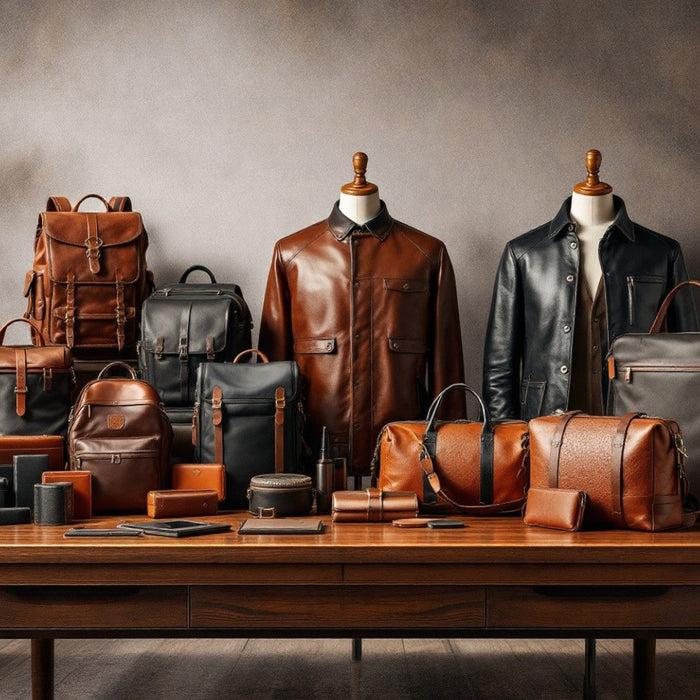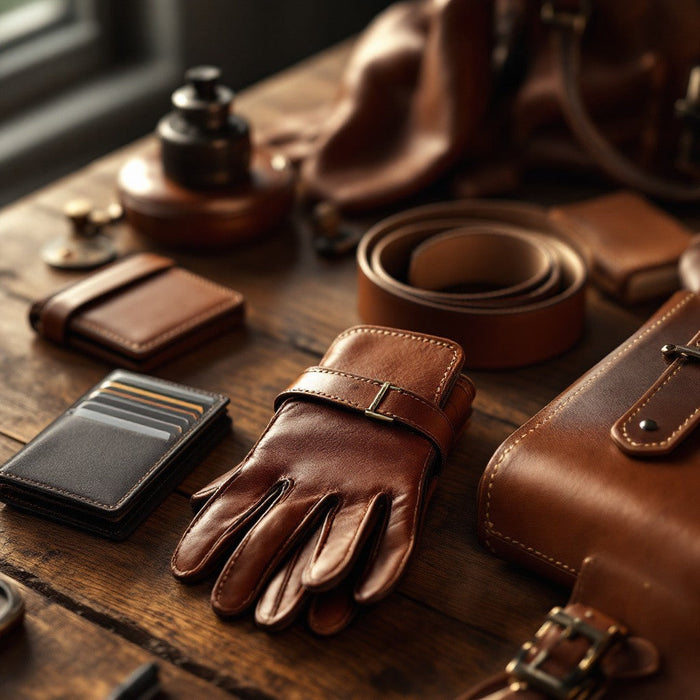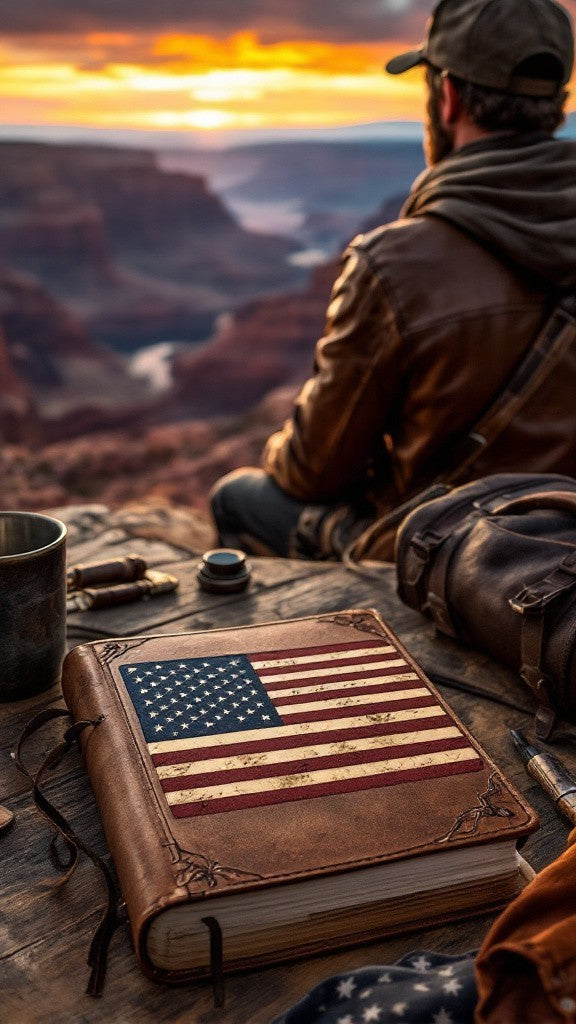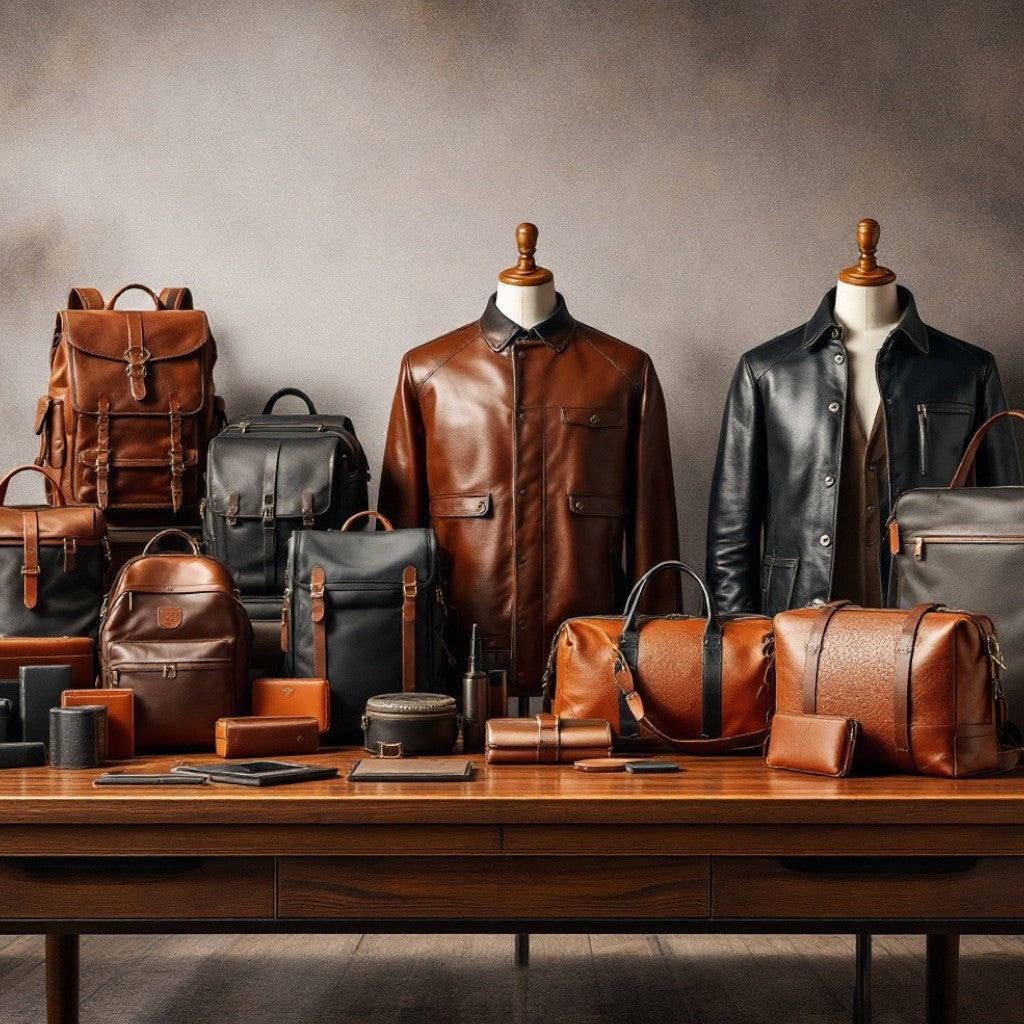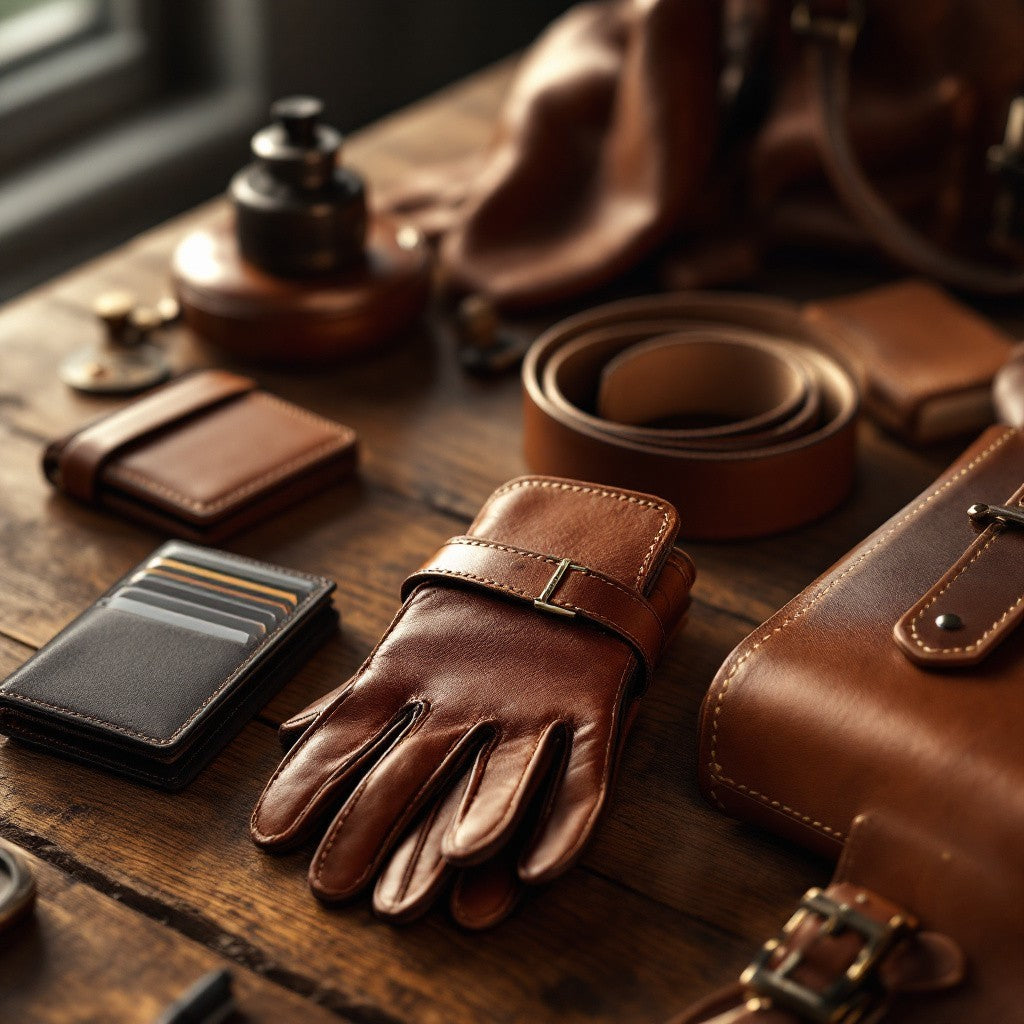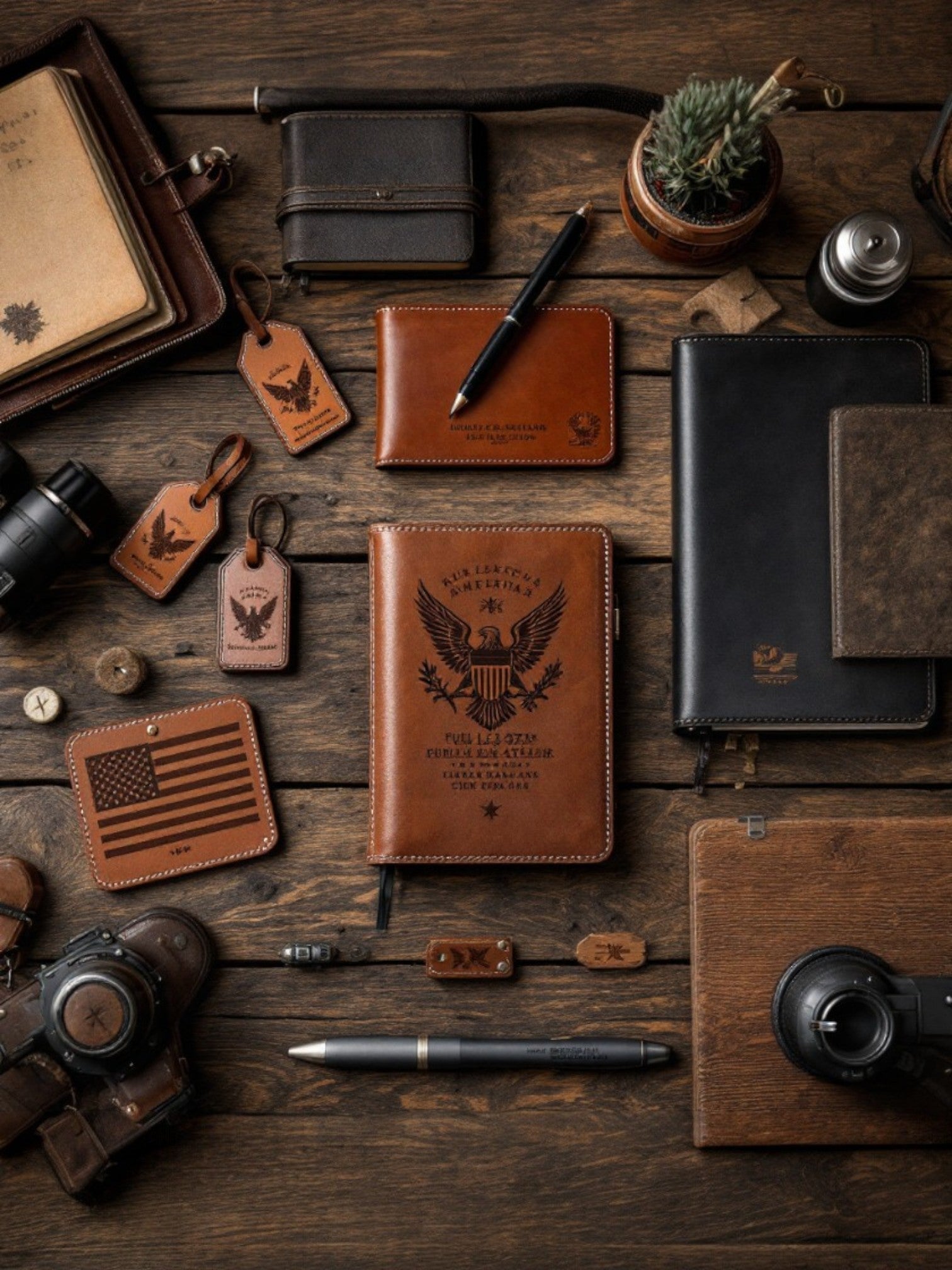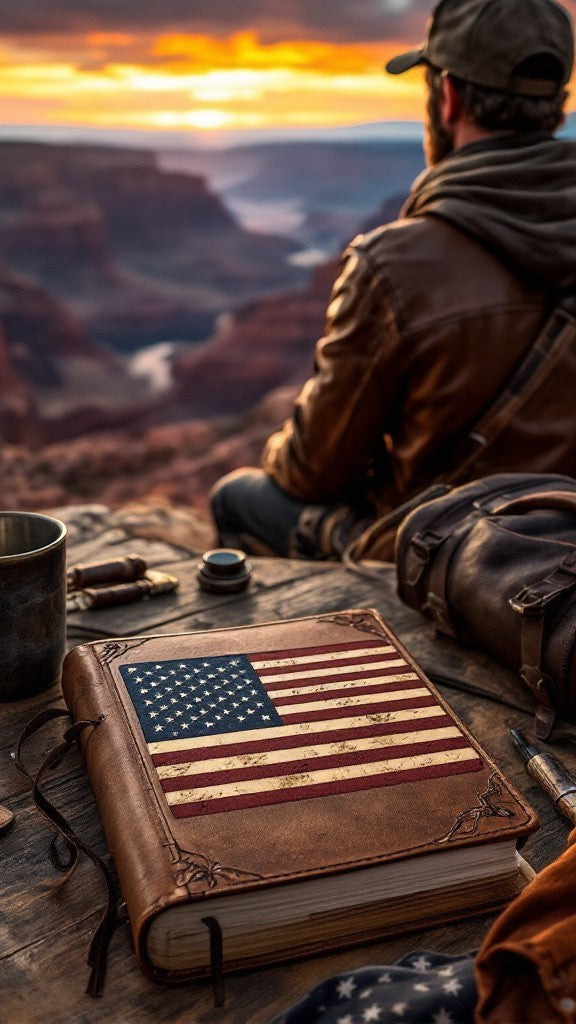
The Anatomy of a Leather Bag: What to Look For Inside and Out
Share
It's More Than Just a Pretty Exterior
When it comes to buying a leather bag, most people stop at the surface. A rich color, a clean shape, maybe a solid strap—that’s all you need, right? Not quite. True quality lives in the details: the parts you touch every day, the way the bag wears in, and how it holds up after years on the road. Here’s how to break down a bag like a craftsman.
The Outer Shell: First Impressions & First Line of Defense
Look for full-grain leather—the toughest, most natural cut of the hide. It resists tears, develops a rich patina, and holds its shape over time. Avoid “genuine leather” or bonded materials that peel, flake, or feel too perfect. At Wyoming Jack, our duffles and crossbodies are made from hand-finished full-grain leather that can take a beating and...
Hardware That Holds
Next, check the zippers, rivets, buckles, and clasps. Are they brass, nickel, or steel? Do they glide easily and close with a satisfying snap or slide? Plastic doesn’t cut it here. Hardware takes constant strain, so quality components mean fewer failures and more longevity.
Handles and Straps
This is where comfort meets construction. Straps should be reinforced, adjustable, and stitched with thick thread. We double-layer ours for structure and finish them with leather-wrapped padding for all-day wear—whether you're slinging a journal, a laptop, or both.
What’s Inside Matters
Peek inside. Real leather bags don’t hide behind flashy interiors. You want natural linings like canvas or suede—or better yet, a full leather interior. Look for structured compartments that keep gear organized, not just an empty shell with a logo.
Shop Rugged Leather Duffles | Explore Structured Everyday Carry
Stitching and Thread: The Unseen Backbone
Think of stitching like a skeleton. It holds the whole structure together. On a well-made leather bag, stitches are even, tight, and straight—with no loose threads or skipped spacing. Look closely at high-stress points like strap joints and corners. Wyoming Jack bags use waxed polyester thread known for its strength and weather resistance. And unlike cotton thread, it doesn’t rot over time.
Weight Distribution and Balance
Ever worn a bag that sagged weirdly or pulled awkwardly on one side? That’s bad design. A great leather bag distributes weight evenly, even when half-full. Our bags are shaped for real use—whether you're carrying a laptop, notebooks, or daily essentials. Structured bottoms, inner dividers, and padded reinforcements help maintain shape without adding unnecessary weight.
The Role of the Base
The base of a leather bag is often overlooked—but it's the part that takes the most hits. Check for reinforced corners, double layers, and if possible, metal feet to keep the leather elevated from grimy floors. We add structural support to the base of our duffle bags and briefcases so they sit upright, not slouch.
Interior Usability
What’s the point of a beautiful bag if you can’t find anything in it? Smart storage matters. Look for zip pockets, pen holders, laptop sleeves, and dividers that separate clean items from rugged ones. Our crossbody and travel bags are designed with quick-access pockets and RFID-blocking compartments, because today’s essentials go beyond just keys and cash.
Matching Form with Function
Each Wyoming Jack bag starts with a purpose. Our crossbody bags are meant for everyday carry—compact yet structured. Our duffles are road-tested and optimized for overhead compartments. Our briefcases are boardroom-ready but built for the grit of daily grind.
The idea is simple: rugged elegance. No frills, no gimmicks. Just tools that work and wear better every year.
Explore Work-Ready Briefcases | Shop the Travel Collection | Learn Our Design Philosophy
Profiles in Carry: Choosing the Right Bag for Your Life
- The Daily Commuter: You need a briefcase with padded laptop protection, slip pockets for notebooks, and clean exterior lines that look sharp in meetings.
- The Weekender: A duffle bag is your best bet—roomy enough for layers and boots, tough enough for rooftop racks and overhead bins.
- The Explorer: A rugged crossbody bag or sling that lets you move freely while keeping your essentials close and protected.
Leather Care for Long-Term Use
Even the best bags need a little attention. Here’s how to ensure your gear lasts decades:
- Clean: Wipe down with a soft cloth weekly—especially if used outdoors.
- Condition: Every 3–6 months, apply a leather balm or conditioner to keep it supple.
- Store: Keep your bag stuffed with paper or fabric when not in use to maintain shape. Avoid plastic bins—use a breathable dust bag instead.
- Dry Naturally: If soaked, let it air dry away from direct heat. Never use a hairdryer or heater.
The ROI of a Good Bag
Spending on a full-grain leather bag may feel like a splurge, but think about it this way: You’re buying one bag for the next ten years instead of five disposable ones. You’re choosing a companion, not just a container. That’s real value—and real savings in the long run.
Wyoming Jack: Built with a Promise
Every Wyoming Jack bag is backed by a lifetime guarantee. That’s not marketing—it’s our standard. We make things the old way: slow, intentional, built to last. No two bags are exactly the same, but they all carry the same purpose—serve your journey, not the season.
Final Thought: Form Follows Function, but Doesn’t Compromise Style
The best leather bag doesn’t just perform—it evolves. It softens where you grip it, darkens where you use it most, and becomes more yours every mile. That’s the magic of full-grain craftsmanship. You’re not just buying a product. You’re breaking in a legacy.
Find Your Travel Companion | Upgrade Your Work Gear | Choose a Bag That Moves With You
How to Choose a Premium Leather Bag for Everyday and Travel
Shopping for a high-quality leather bag isn’t just about appearance—it’s about understanding construction, function, and materials. When comparing genuine leather vs. full-grain leather bags, the difference is night and day. Full-grain offers unmatched strength, aging beautifully over time, while bonded or “genuine” leather often cracks, peels, or collapses with use.
Whether you're searching for the best leather work bag for men, a women’s full-grain leather crossbody, or a leather duffle bag for weekend trips, here’s what matters:
- Leather thickness and grade – Avoid split or faux options. Full-grain ensures long-term durability.
- Stitch quality and edge finishing – Clean cuts and tight stitching are hallmarks of a well-built bag.
- Ergonomic design – Look for padded straps, reinforced handles, and functional compartments.
Top Uses for Full-Grain Leather Bags
At Wyoming Jack, our handcrafted leather bags are perfect for:
- Everyday carry (EDC): Stylish, structured crossbody bags that fit your essentials without excess bulk.
- Professional settings: Our leather briefcases are designed to carry laptops, portfolios, and tools with polish and power.
- Adventure travel: Durable, oversized leather duffles that meet airline requirements and carry it all with rugged ease.
What Sets Wyoming Jack Leather Bags Apart?
We don't just create leather bags—we build lifelong companions. Each piece is crafted in the USA, cut from hand-selected hides, and stitched by artisans who believe in heritage and function. Our goal is to offer the best American leather bags without compromise—tools for those who expect more from their gear.
Discover the Wyoming Jack Difference | Explore Leather Essentials

